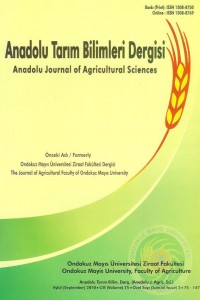Öz
No studies in Tunisia have focusing on an analysis of oniscidean diversity in wetlands. To improve our knowledge on the species occupying this type of habitat, field work was conducted during spring 2008 in 18 wetlands (3 dams, 4 hill reservoirs, 7 lagoons, 2 sebkhas and 2 rivers) located in the north of the Tunisian dorsal. Isopods were collected by hand each time with respect to the same sampling effort. At the laboratory, Isopods are identified, counted and sexed. Physico-chemical analyses were performed from soil sampled in each site. The results reveal the presence of 19 terrestrial isopods species belonging to 10 families. Chaetophiloscia cellaria and Porcellio laevis are the most abundant species; their relative abundance is respectively equal to 29.5 and 23.4 %. The species richness varied from 8 in both lagoons of Ghar El Meleh and Bizerte to 1 in some hill reservoirs. Chaetophiloscia cellaria, Leptotrichus panzeri, Porcellio variabilis and Porcellio laevis tolerate changes in salinity up to 35.4 g/kg, whereas others, such as Armadillidium sulcatum and Armadillo officinalis, were collected in stations where soil salinity does not exceed 8.5 g/kg. Among environmental factors, this study shows the effect of soil salinity on the distribution of terrestrial isopods. Other factors, such as relative humidity, conductivity and calcium content of the soil, will be discussed in order to define the preferendum of each species.
Anahtar Kelimeler
Distribution Terrestrial isopod Wetland Soil salinity pH value
Öz
Ayrıntılar
| Birincil Dil | İngilizce |
|---|---|
| Bölüm | Toprak Bilimi ve Bitki Besleme |
| Yazarlar | |
| Yayımlanma Tarihi | 20 Ağustos 2010 |
| Yayımlandığı Sayı | Yıl 2010 Cilt: 25 Sayı: 2 |


